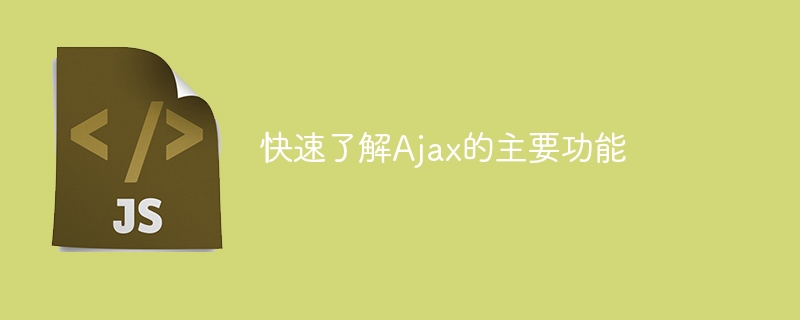

Quickly understand the main functions of Ajax, you need specific code examples
Introduction:
In modern web applications, we often use Ajax (Asynchronous JavaScript and XML ) to implement asynchronous communication. Through Ajax, we can interact with data on the web page and dynamically update data without reloading the entire page. This article will introduce the main functions of Ajax and provide specific code examples.
1. The main functions of Ajax:
2. Code example:
The following is a code example using Ajax for asynchronous communication:
function getData() {
var xhr = new XMLHttpRequest();
xhr.open("GET", "data.json", true);
xhr.onreadystatechange = function() {
if (xhr.readyState === 4 && xhr.status === 200) {
var data = JSON.parse(xhr.responseText);
// 在这里对数据进行处理和展示
}
};
xhr.send();
}The above code uses the XMLHttpRequest object to send GET request to obtain the data in the data.json file. When the request returns successfully, the response result is converted into a JSON object through the JSON.parse() method, and then the data can be processed and displayed.
In addition to GET requests, we can also use Ajax to send POST requests:
function postData() {
var xhr = new XMLHttpRequest();
xhr.open("POST", "http://example.com/api", true);
xhr.setRequestHeader("Content-Type", "application/json");
xhr.onreadystatechange = function() {
if (xhr.readyState === 4 && xhr.status === 200) {
var response = JSON.parse(xhr.responseText);
// 在这里对响应数据进行处理和展示
}
};
var data = {
username: "John",
password: "12345"
};
xhr.send(JSON.stringify(data));
}The above code uses the XMLHttpRequest object to send POST requests to http://example .com/api interface, and set the Content-Type of the request header to application/json. Convert the data into a JSON string through the JSON.stringify() method and send it to the server through the send() method. When the request returns successfully, the response data can be processed and displayed.
Conclusion:
Through the above introduction and code examples, I hope readers can quickly understand the main functions of Ajax. Ajax can realize asynchronous communication, dynamic data update, form data submission, real-time search, data acquisition and processing and other functions, which greatly improves the user experience and performance of web applications. By using Ajax, we can achieve more flexible and efficient web page interaction.
The above is the detailed content of A brief introduction to the main functions of Ajax. For more information, please follow other related articles on the PHP Chinese website!